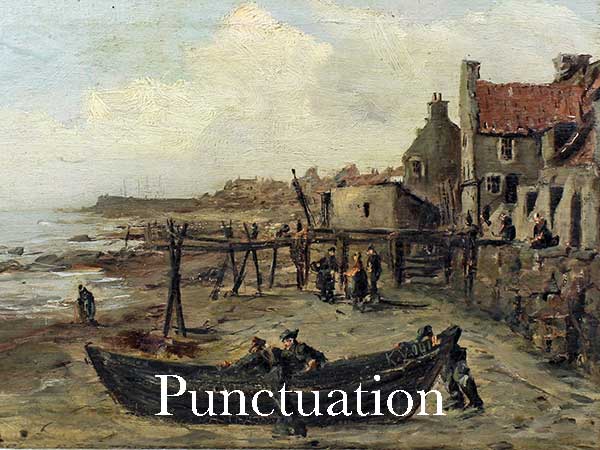
Punctuation Rules
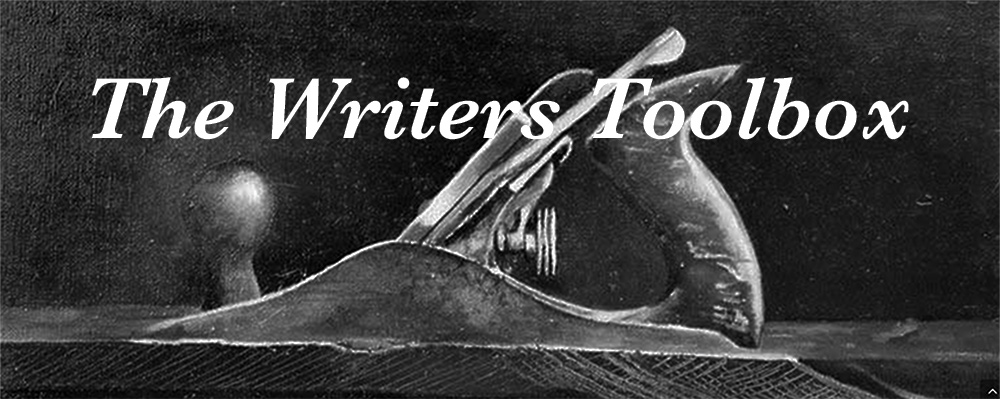
Punctuation Rules
Comma Rules and other cool punctuation tips and tricks...
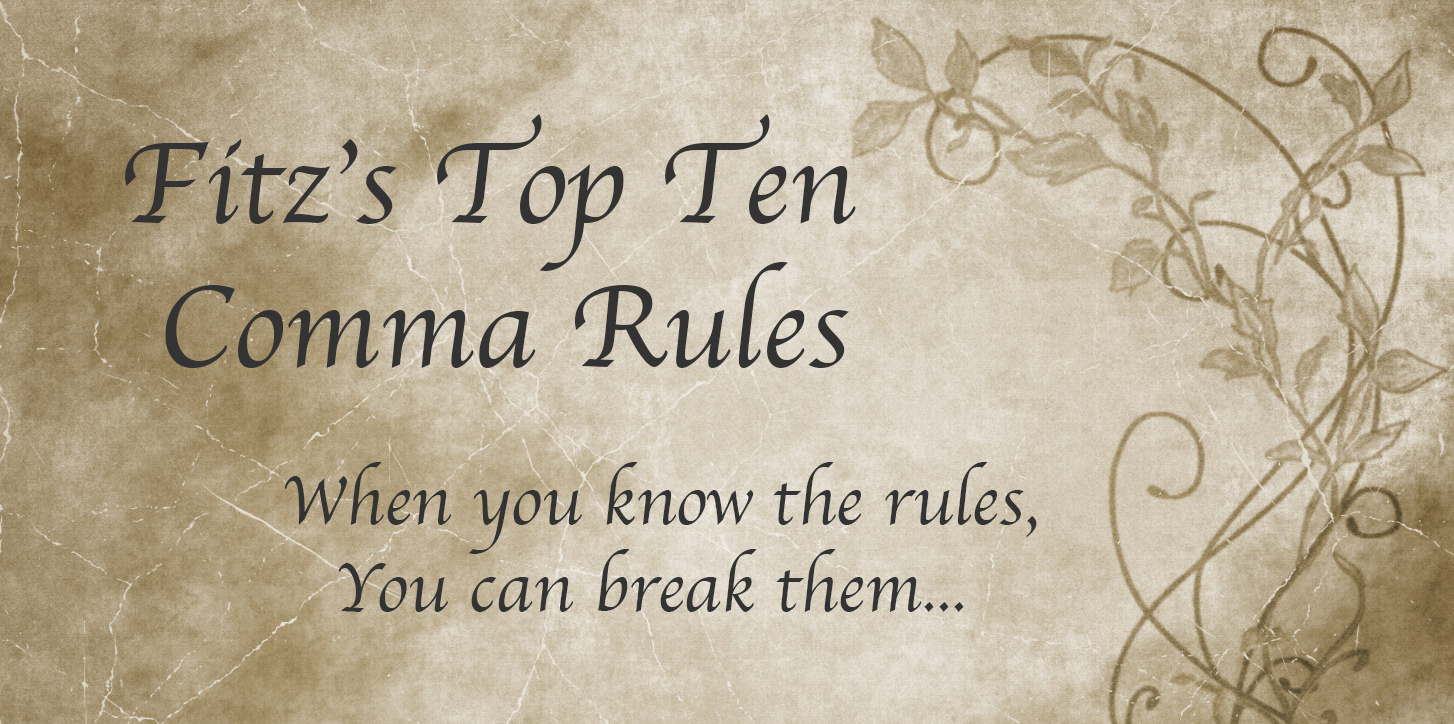
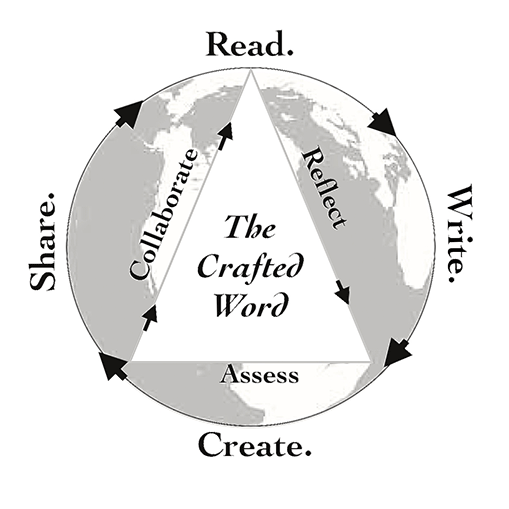
Things to know…
- Commas are used to separate three or more words or phrases (elements) in a list or series.
- “Sometimes” (though rarely) a list of clauses can be separated with commas.
- Commas can separate clauses, but only if the comma precedes a coordinating conjunction
- If you connect two clauses with a comma, you create the dreaded “comma splice.”
- You may omit the last comma [which is called the Oxford Comma] if there will be no confusion in meaning.
- If there are only two elements, no comma is needed between the elements.
Audio Player
Rule #1: Commas in a Series
Audio PlayerCommas are used to separate three or more words or phrase in a list or series.
- e.g. Please bring skates, gloves, hats and food to the rink. [with words]
- e.g. I am tired of you always forgetting your books, forgetting your assignments, and forgetting to bring a pencil to class. [with phrases]
Commas can separate clauses, but only if the comma precedes a coordinating conjunction.
- e.g. I am going to the mall, and I am going to the Apple store, but I am not going to buy anything.
- e.g. I heard my mother calling, so I walked home, and I found a ball, a bat, three quarters and one old shoe on the way home.
If you connect two clauses with a comma, you create the dreaded “comma splice,” which is in my top ten writing mistakes of all time.
- e.g. I am going fishing, I will use my new fishing pole
To “repair” a comma splice you can add a period and make two sentences:
- e.g. I am going fishing. I will use my new fishing pole.
Or you can add a comma and a conjunction:
- e.g. I am going fishing, so I will use my new fishing pole.
Or you can replace the comma with a semi-colon:
- e.g. I am going fishing; I will use my new fishing pole.
You may omit the last comma [which is called the Oxford Comma] if there will be no confusion in meaning.
- e.g. I love pizza, milk, and french fries. [three items with an Oxford Comma=no confusion]
- e.g. I love pizza, milk and french fries. [three items without an Oxford Comma (but milk and french fries might not be good mixed together:)
If there are only two elements, no comma is needed between the elements.
- e.g. I love pizza and french fries.
- e.g. I despise the Rangers and the Redwings.
If you are introducing a list with a noun, use a colon to introduce the list.
- e.g. Don’t forget these important items: my books, pencil, baloney, and peanut butter and fluff sandwich.
- e.g. Today is a proud day: you graduated from school; you have been offered a good job, and you are moving out of the house.
*If you introduce the list with a verb use a comma after the first item in the list:
- e.g. Don’t forget to bring my books, pencil, baloney, and peanut butter and fluff sandwich.
Note how important the Oxford Comma is here. Without it, a reader might infer that someone should bring a baloney and peanut butter sandwich, which is kind of gross:)

Things to know…
- So, yet, and, or, nor, for, and but are the seven coordinating conjunctions.
- A comma and a conjunction can always be replaced with a period or semi-colon instead of the comma and conjunction.
- Soyet Andor Norforbut only work as conjunctions if they are connect two or independent clauses together
- If the sentence is brief, a comma is not required before the conjunction.
Audio Player
Rule #2: Commas with Coordinating Conjunctions
Audio PlayerCommas with conjunctions must have an independent clause (meaning, the clause can stand alone as a sentence) BEFORE and AFTER the conjunction and comma.
- e.g. I need to buy a new computer, so I am going to the mall.
- e.g. It is a cold day, yet it is a beautiful day on the mountain.
- e.g. Sally is happy today, and she is feeling better.
- e.g. I am either going to climb the mountain, or I am going to die trying.
- e.g. I am not talented enough, nor is there a place for me on the team.
- e.g. Do not show up at my house, for I am not going to be home today.
- e.g. I am not a good basketball player, but I am an amazing baseball star.
A comma and a conjunction can always be replaced with a period or semi-colon instead of the comma and conjunction.
- It is raining, so I am not going to school. [comma and conjunction]
- It is raining; I am not going to read. [semi-colon]
- It is raining. I am not going to study comma usage. [period]
Soyet Andor Norforbut only work as conjunctions if they are connecting two or more independent clauses together to create a compound sentence; otherwise, they are being used in different ways.
- e.g. You are so cool! [Here “so” is being used as an adverb]
- e.g. I am not done, yet. [Here yet is being used as an adverb that indicates time.]
- e.g. I play soccer and tennis in the summer [Here “and” is being used to connect a series of two items, not as a conjunction joining two independent clauses]
Here are more examples where a comma is “not” needed:
- e.g. I don’t like fish or fowl.
- e.g. I don’t like swimming nor sailing.
- e.g. Finally, my car is for sale!
- e.g. She loves everyone but me.
If the sentence is brief, say eight words or less, it is perfectly fine to leave out the comma as there is no loss in meaning.
- e.g. I don’t want to and you don’t want to!
- e.g. Give it back or you’ll regret it.
- e.g. She’s pretty but she’s not happy.
- e.g. Give me some money so I can go!
Check out my video explaining Rule #2: Commas with Conjunctions…

Things to know…
- An introductory element is any word, phrase or dependent clause that comes before the main independent clause of the sentence
- Introductory words are usually names, adverbs, salutations or interjections
- Introductory phrases set up or place in context the main clause of the sentence, and so are usually prepositional or adverbial phrases
- Introductory clauses are always dependent because the clause contains a subject and a verb, but it is not a completed thought
Audio Player
*An introductory element is any word, phrase or dependent clause that comes before the main independent clause of the sentence.
- Introductory words are usually names, adverbs, salutations or interjections
- e.g. Actually, Fred can take the test. [introductory adverb]
- e.g. Fred, be careful taking the test. [introductory name]
- e.g. Oh, Fred should be careful taking the test. [interjection]
Introductory phrases generally act to set up or place in context the main clause of the sentence, and so are usually prepositional or adverbial phrases.
Adverbial phrases modiify some sort of action (a verb) by telling a reader:- when some action happened
- where some action happened
- how some action happened
- how much some action happened
- e.g. Without thinking, he ran into the burning building and saved his goldfish. [This is an adverbial phrase: the word without modifies the verb thinking]
- e.g. Before dinner, I plan on taking a nap. [This is a prepositional phrase: the word before modifies the noun dinner]
NOTE: As far as comma usage goes, knowing whether the phrase is a prepositional phrase or an adverbial phrase does not really matter. All that really matters is that you–the writer–reccognize the phrase as a phrase introducing and/or modifying the independent clause that likely follows. Whether or not the comma is “needed” can be the choice of the writer depending on if you want the reader to pause at that point in time.
- e.g. Without a second thought he saved his goldfish. [Only a fool or a pedantic old teacher would be perplexed by the lack of a comma in this sentence.]
Introductory clauses are always dependent or subordinate clauses (different name for essentially the same thing) because the clause contains a subject and a verb, but it is not a completed thought. To muddy the water even further, some folks call these clauses restricted or unrestricted clauses. A dependent/subordinate/restricted clause always has a “word” before the clause (marked in red in the example). This is often called the dependent marker word.
- e.g. Because it is snowing, I am not going to school.
- e.g. After the snow falls tonight, school will surely be canceled tomorrow.
- e.g Provided our headmaster is a wise man, we will surely get the day off tomorrow.
- e.g. Since you don’t seem to care, we will have school tomorrow!
*Below is an incomplete list of possible dependent marker words introducing a dependent clause:
- rather, even though, once, whenever, although, until, if only, whereas, as long as, because, before, as if, after, whether, etc…

Things to know…
- Parenthetical elements are words and phrases that add detail to a sentence, but which are not “essential” to an understanding of the sentence.
- A parenthetical element is a non-essential element, meaning it “could” be enclosed in parentheses and left in the sentence, or it could be removed from the sentence.
- If you want your reader to read the parenthetical element without emphasis, use commas.
- If you want to whisper or say something as an aside, use parentheses.
- If you want to shout or add a lot of emphasis use double dashes to enclose the element.
Parenthetical elements are words and phrases that add detail to a sentence, but which are not “essential” to an understanding of the sentence.
- I heard his car, clanging and banging like pots and pans, coming down the street. [“clanging and banging like pots and pans” is added detail that is not necessary to understand the sentence. It is simply a phrase that adds vivid, but not essential, detail.]
A parenthetical element is a non-essential element, meaning it “could” be enclosed in parentheses and left in the sentence, or it could be removed from the sentence.
- The kid in the back row, who loves grammar, took all of the quizzes and studied the comma use web page. [The parenthetical element is included in the sentence]
- The kid in the back row took all of the quizzes and studied the comma use web page. [The parenthetical element is NOT included in the sentence]
If you want your reader to read the parenthetical element without emphasis, use commas.
- The kid in the back row, who loves grammar, took all of the quizzes and studied the comma use web page
If you want to whisper or say something as an aside, use parentheses.
- The kid in the back row (who loves grammar) took all of the quizzes and studied the comma use web page
If you want to shout or add a lot of emphasis use double dashes.
- The kid in the back row—who loves grammar—took all of the quizzes and studied the comma use web page!

Things to know…
- Descriptive adjectives are used to help add detail to nouns or a noun phrase
- In a series of adjectives, there should be a comma between every adjective except the last one in the series
- If you can naturally (meaning, without it sounding weird) put an “and,” “or,” or “but” or any word like these between the adjectives, a comma will probably belong there!
Descriptive adjectives are used to help add detail to nouns or a noun phrase. It can be a single adjective which does not require a comma:
- He bought a red car. [Here “red” is the single adjective describing the noun “car.”]
- He bought a red Ford Mustang. [In this case, red is the single adjective describing the “Ford Mustang.” (a noun phrase)]
In a series of adjectives, there should be a comma between every adjective except the last one in the series.
- He bought a new, sleek, shiny red car. [In this case, “new, sleek, and shiny” are describing the “red car,” which is a single thing— a single noun phrase
- He is a cruel, mean, nasty hard-hearted teacher, but, at the same time, he is a wise old owl. [Here “nasty is describing the “hard-hearted teacher; while, “wise” is helping to describe the noun phrase “old owl.”]
- He is a cruel, and mean, and nasty hard-hearted teacher, but, at the same time, he is a wise, old owl. [In this sentence there is a subtle difference as “wise” and “old” are now being used to describe the “owl”—subtle difference, but still a difference.]
If you can naturally (meaning, without it sounding weird) put an “and,” “or,” or “but” between the adjectives, a comma will probably belong there.
- He bought new and sleek and shiny red car.
- He is a cruel, and mean and nasty hard-hearted teacher, but, at the same time, he is a wise and crafty old owl. [In these sentences the connecting word “and” is used to connect the adjectives; hence, no comma is needed.

Things to know…
- Conjunctive adverbs are a “bit” like conjunctions because they connect two independent clauses. The difference is that the conjunctive adverb shows “how” the the two independent clauses are related.
- Conjunctive adverbs can be used to extend a thought and connect multiple independent clauses into a single cohesive sentence.
- A conjunctive adverb can be a single word (e.g. however) or an adverbial phrase (e.g. on the contrary).
What is a Conjunctive Adverb?
Conjunctive adverbs are a “bit” like conjunctions because they connect two independent clauses. The difference is that the conjunctive adverb shows “how” the two independent clauses are related.
Warning: Use conjunctive adverbs sparingly. If you use them too often in a writing piece, your writing might sound “a bit” pretentious…
Here are some examples of conjunctive adverbs…
also, anyhow, anyway, as a result, at last, at the same time, besides, certainly, consequently, earlier, eventually, finally, for example, for instance, further, furthermore, hence, however, in addition, in any case, incidentally, indeed, in fact, in short, instead, in the meantime, later, likewise, meanwhile, moreover, namely, nevertheless, next, now, on the contrary, on the other hand, otherwise, perhaps, similarly, so (as in soooo…) still, subsequently, that is, then, therefore…
Whenever you use a conjunctive adverb in a sentence, you should put a semi-colon before the conjunctive adverb and a comma after the conjunctive adverb. Just be sure there is an independent clause before the conjunctive adverb AND after!
- e.g. English is fun; however, Fitz is boring.
- e.g. “Always go to other people’s funerals; otherwise, they won’t go to yours.” ~Yogi Berra
- e.g. He was caught cheating on the test; subsequently, he was suspended from school for a week.
- e.g. Finally, we are finished with seven of the top ten comma rules; nevertheless, we still have three more rules to go!
A conjunctive adverb can also be a part of an adverbial “phrase:”
- e.g. I don’t dislike you; on the contrary, I think you are a fascinating person.
- e.g. I don’t like skiing; on the other hand, I like winter.
There are often times when you use one of these words to start a sentence or place one within a clause.In these cases, do not use a semi-colon and comma. If the conjunctive adverb acts as the introductory word, put a comma after it.
- e.g. Nonetheless, we still had a wonderful day.
If it is within a clause, treat it as you would a non-essential element (which in a way it is!) and put a comma before and after the conjunctive adverb.
- e.g. That student, however, is an amazing scholar.
- e.g. Today’s sunshine, nevertheless, is just a brief respite before another lousy day.
*Conjunctive adverbs can be used to extend a thought and connect multiple independent clauses into a single cohesive sentence.
Here’s an example of how to make a way-cool impressive sentence: Independent clause + (semi-colon) + conjunctive adverb + (comma) +Independent clause…
- e.g. The rain fell down in sheets yesterday; it washed away streets and bridges, however, we did not let it dampen our spirits, but it did dampen our clothes.
Here’s how to make an even cooler tri-colon sentence: Independent clause + (semi-colon) independent clause + semi-colon + conjunctive adverb + (comma) +Independent clause + coordinating conjunction [soyet and or norforbut] + comma + independent clause = a wham dammer of a sentence!
- e.g. You need to pay attention to the comma rules; you need to learn what makes sentences flow as a single thought, moreover, you have to practice what you learn, and sooner than later you will become a more effective, confident and fluent writer!

Things to know…
- Using commas to express a contrast is important when comparing the differences between two things and you want to emphasize the contrast
- Sometimes the contrasting element is embedded within a longer sentence
- You don’t need a comma if you are not trying to emphasize the contrast
- If the pause feels longer than one or two seconds, always put in the comma
Using commas to express a contrast is important when comparing the differences between two things and you want to emphasize the contrast.
- e.g. He’s big, but slow.
- e.g. Go up, not down.
Sometimes the contrasting element is embedded within a longer sentence:
e.g. It is because of my brains, not my good looks, that people love me.
e.g. Focus on the good things in life, not the bad, as you grow and mature into an adult.
[These could almost fall under the category of commas with parenthetical elements, but it doesn’t because the phrase is a needed to fully understand the sentence.]
You don’t need a comma if you are not trying to emphasize the contrast:
- e.g. He’s big and slow.
- e.g. I am smart and good looking.
- e.g. Be happy and don’t worry.
- e.g. It is better to go up than to go down.
A good rule of thumb to follow when using commas to create a contrast is to “listen” for the pause in the sentence where you create the contrast. If the pause feels longer than one or two seconds, put in the comma, or, better yet—a long dash or semi-colon:
- e.g. Don’t worry, be happy.
- e.g. Don’t worry; be happy.
- e.g. Don’t worry— be happy!
- e.g. Don’t worry. Be happy.

Things To know…
- If you are leading into a quote with a verb, put a comma after the verb and then insert your quote
- Use a colon when the quote is introduced by a noun
- If a quote is four or more lines long, separate the quote as a paragraph [called a block quote] introduced with a colon, whether the preceding word is a verb or not
If you are leading into a quote with a verb, put a comma after the verb and then insert your quote. End punctuation goes within the quote (unless you live in England, then it goes outside the quote:)
- e.g. Fitz said, “Know how to use commas, and you are 90% of the way to writing grammatically correct sentences.” [Note that the verb “said” leads into the quote.]
It is important to remember that you can also use a colon to set off a quote. Use a colon when the quote is introduced by a noun:
- e.g. My teacher says Fitz has too many rules, and this is what he told his students: “To thine own self be true. Don’t listen to fools.” [Note that the noun “students” leads into the quote.]
In a long quote that is block-quoted(three or more lines on the page) you do not need the quotation marks because the indentation, italics and context indicates the quote. Be sure to block quote the entire quote—don’t center it!
- In his book Walden, Thoreau wrote:
A single footstep will not make a path on the earth, so a single thought will not make a pathway in the mind. To make a deep physical path, we walk again and again. To make a deep mental path, we must think over and over the kind of thoughts we wish to dominate our lives.
NOTE: Under my belief that if you know the rules you can break them, I always put quotes in italics because it makes it extra obvious to the reader that it is a quote, which is a good thing, but it is not a “rule.” When all is said and done, you can almost always use a comma to introduce a quote as there is seldom any loss of clarity or context.

Things to know…
- This rule is fairly simple:
- Commas go everywhere, except between the month and the day…
The rule is simple: Commas go everywhere, except between the month and date
- e.g. There is going to be a great concert on Saturday, October 2, in Paris, France, at 2:00 PM
- e.g. The best place to be on June 7, 2011, is at The Fenn School, Concord, Massachusetts.
- e.g. The best place to be on June 7, 2011, is at The Fenn School, in Concord, Massachusetts!
- e.g. We are going to Beijing, China, to see the Olympics
There could well be some valid arguments about this rule, but you won’t go wrong keeping the rule simple and straight-forward. Above all, be consistent!
This would be incorrect:
- e.g. We are going to Beijing, China to see the Olympics.
- e.g. We are going to Beijing China to see the Olympics.
This, however, is correct:
- e.g. We are going to China to see the Olympics.

Things to know…
- A tag element is a word or phrase “tagged” on to the end of a sentence
- A comma should be placed before the final word or phrase in a sentence “if” that word or phrase is not essential to the meaning of the sentence
- A tag element can only follow an independent clause
- In most cases, the tag element can be removed from the sentence without any loss in meaning
A tag element is a word or phrase “tagged” on to the “end” of a sentence:
- e.g. Do you love studying commas, Peter?
- e.g. I couldn’t memorize all of this myself, of course.
- Would you like to go with me, too?
In a brief sentence (seven words or less) the comma before the tag element is not always needed and is an optional choice:
- e.g. Do you love studying commas Peter?
- e.g. I’ll come with you too.
You would have to be a pretty poor reader to be confused by either of these sentences. It is still perfectly fine to put the commas in:
- e.g. Do you love studying commas, Peter?
- e.g. I’ll come with you, too.
A tag element can only follow an independent clause:
- e.g. Today is the the big debate, isn’t it?
- e.g. You have really done well today, Suzie.
Likewise: a tag element is rarely (if ever) preceded by a verb or preposition
- e.g. Nobody likes hot dogs like Ted.
- e.g. It felt awesome to run home.
- e.g. Molly and Fred will go anywhere with Ted and Suzie.
- e.g. I will go downtown with whoever wants to go.
In most cases, the tag element can be removed from the sentence without any loss in meaning (though there will be a loss in clarity!)
- e.g. Do you love studying commas? (Peter)
- e.g. I couldn’t memorize all of this myself. (of course)
- Would you like to go with me? (too)

How To Use the Semi-colon
The Death of the Semi-Colon...
Here is a lesson in creative writing. First rule: Do not use semicolons. They are transvestite hermaphrodites representing absolutely nothing. All they do is show you’ve been to college.
~Kurt Vonnegut
“Let it die the death it deserves,” came the tough talk aimed at me by a devoted (and excellent) teacher, trashing one of my favorite punctuation marks—and, still, he went on: “No one knows what a semi-colon really does, so why even use it in a sentence?” At first I took it like an affronted and indignant-grammarian: “Why you…” and reminded him that I am also the wrestling coach. But then I relaxed, because I realized that most people don’t really give a damn about punctuation marks unless it screws them up when reading? (kind of like that). If my friend has a problem with semi-colons, then it is his battle with his demons—not mine. Perhaps his animosity should be geared towards whomever taught him (or failed to teach him) about semi-colons in the first place. From my point of view, semi-colons are a pretty cool writing device–but, like strong medicine–best used wisely; otherwise, you’ll be like an obnoxious rich kid flashing money around just because you can. One of the coolest ways to use a semi-colon is to use it as a super comma—especially when you are trying to capture the nuances of a powerful image or thought. If the commonly used phrase to describe a sentence is to say that a sentence is a thought fully expressed, then why kill the thought early? We are not all as laconic as Hemingway or Calvin Coolidge. We keep telling our kids that an important skill in life is the ability to “extend a conversation” when speaking with someone else—especially someone we don’t know well; and it is the semi-colon that lets us extend the conversation in a sentence; it works to keep the magic flowing. For the most part, it seems like writers of old enjoyed their thoughts better than we do, for on the whole the old-timers used semi-colons more than we do to extend that special deliciousness of a good thought—like a long note played on a violin. Here is Mark Twain playing a long note in Huck Finn: [Note: when reading commas, let your breath hesitate briefly or breathe in slightly. Use a bit more of a stop with a semi-colon, but keep the flow going and don’t let your voice trail off or lose steam—because you got to keep on going, baby; you’ve got more that people need to hear, and you don’t want to lose whatever precious audience you have.]
It was one of these regular summer storms. It would get so dark that it looked all blue-black outside, and lovely; and the rain would thrash along by so thick that the trees off a little ways looked dim and spider-webby; and here would come a blast of wind that would bend the trees down and turn up the pale under-side of the leaves; and then a perfect ripper of a gust would follow along and set the branches to tossing their arms as if they was just wild; and next, when it was just about the bluest and blackest — fst! it was as bright as glory, and you’d have a little glimpse of tree-tops a-plunging about away off yonder in the storm, hundreds of yards further than you could see before; dark as sin again in a second, and now you’d hear the thunder let go with an awful crash, and then go rumbling, grumbling, tumbling, down the sky towards the under side of the world, like rolling empty barrels down stairs — where it’s long stairs and they bounce a good deal, you know.
Now that is a writer who appreciates a good storm, and Twain certainly wasn’t going to let us out of this sentence until his thought was fully expressed! By not forcing a full stop by using a period, the effect of the imagery layered upon more imagery (but all describing one storm) is more heightened and more “storm-like,” which is precisely what Twain probably set out to do. And here is Henry David Thoreau in Walden using semi-colons in a similar way; except here the semi-colons are used as a sort of super-commas that deliver a series of thoughts—all of which are directly connected to the scathing and damning thought in the first clause of the sentence.
It is very evident what mean and sneaking lives many of you live, for my sight has been whetted by experience; always on the limits, trying to get into business and trying to get out of debt, a very ancient slough, called by the Latins aes alienum, another’s brass, for some of their coins were made of brass; still living, and dying, and buried by this other’s brass; always promising to pay, promising to pay, tomorrow, and dying today, insolvent; seeking to curry favor, to get custom, by how many modes, only not state-prison offences; lying, flattering, voting, contracting yourselves into a nutshell of civility or dilating into an atmosphere of thin and vaporous generosity, that you may persuade your neighbor to let you make his shoes, or his hat, or his coat, or his carriage, or import his groceries for him; making yourselves sick, that you may lay up something against a sick day, something to be tucked away in an old chest, or in a stocking behind the plastering, or, more safely, in the brick bank; no matter where, no matter how much or how little.
That’s one sam hill of a sentence, even if you don’t live a mean and sneaking life! In both of these passages, two of America’s greatest writers use the semi-colon as a super-comma to tie together a series of images and/or thoughts. If only commas were used, both sentences would fall apart after a few clauses; if the writers chose to write a series of more compact sentences, the urgency and freshness of the thoughts would be deadened and lose a good part of their effect, but with the semi-colons acting as a loose glue holding together the clauses and planks of images and thoughts, we, as readers, share in the immediacy of the cascade of words; we give ourselves into the moment; moreover, we are rewarded by a thought that is fully-expressed, clearly-stated, and, above all, memorable. So, my angry friend, if you are still not convinced that a semi-colon deserves at least some respect, can you let it survive for another profound reason—one that is based on our almost mystic response to the sound of words strung together in groups of three. For some reason the power of the trinity in writing is immense. It even has a name. When you group a series of words, thoughts, phrases, or clauses into three’s, it creates something called a Tricolon. Tying together three clauses to make one amazing (and mystically enchanting) sentence out of three connected thoughts is a skill worth learning how to do. All it takes is three clauses, one semi-colon, a comma with a conjunction, and an end mark of some kind.
You can’t let other people dictate how you live; you can’t let other people impose their narrow prejudices, and you certainly can’t live someone else’s life!
Just by using that single semi-colon to connect the first and second clauses and the conjunction to lead into the final clause, the full sentence reads as a passionate plea, instead of a list of reasons. At least it does to me. In fact, anytime you have two clauses connected by a comma and a conjunction, you can always replace that comma and conjunction with a semi-colon—if (a big if) it sounds right to you. It is less abrupt than using a period. Instead, it creates a brief, yet connected, terseness. You can also just put in a period and create two sentences. If, woe to you, you insert a comma without the conjunction (Soyet, andor, norforbut; FANBOYS—or however you want to remember these “subordinating conjunctions), you create the dreaded comma splice and will no doubt incur the gleeful wrath of your teacher who has finally found something of substance to lower your grade even further.
I love the water, but I hate swimming. Perfectly fine. I love the water; I hate swimming. Perfectly fine. I love the water. I hate swimming. Perfectly fine. I love the water, I hate swimming. AAARGHH! YOU IDIOT! HAVE YOU ANY BRAINS?
So what else justifies the existence of this punctuation mark? Here is a good one: You can use a semi-colon to separate different states and cities in a list of cities and states (not that this is a common writing practice).
We are going to Boston, Massachusetts; Manchester, New Hampshire; Hartford, Connecticut; Minnesota, Minnesota; New York, New York; Utah, Utah; and Washington, DC.
Got you there, didn’t I? Otherwise, it would be comma madness. (And yes, I had to look up the cities and states that had the same names—except, of course, New York, New York.) OK. I am scraping the bottom of the barrel here, but there is one final—albeit a bit pretentious sounding—use of the semi-colon, and that is how to use a semi-colon with a conjunctive adverb and a comma to connect two otherwise perfectly happy sentences. But I’ll admit, I do feel smart when I use these, and you will, too–especially if your teacher is impressed by academic sounding language; however, (here I go) if you use too many conjunctive adverbs, you will have to sign up for a dating service to find friends. I won’t list all the conjunctive adverbs because I don’t want to be too closely associated with their use (and misuse); moreover, I am sure by this point, I have lost the few readers I had when I started this foolish and vainglorious exercise. Suffice to say, conjunctive adverbs are words like these: nonetheless, actually, accordingly, however, nevertheless, therefore, otherwise, etc.,…. I do appreciate that you have stuck with me this far; nevertheless, staying up late reading about semi-colons is not something you should brag about to your friends—both of them. Only kidding, of course. Thanks for reading! ~Fitz
To Extend a Thought
Most teachers of younger writers have a fear of long sentences, and, to be honest, longer sentences can be like trying to carry to many books under one arm up a crowded stairwell; but–like a fast flowing and dynamic conversation, the only way to capture the true power of words we sometimes “need” to keep the original thought alive longer than a simple compound sentence allows. Luckily, the semi-colon, viewed by an intelligent reader, is custom made to help create and sustain a powerful narrative flow.
To Add Brevity and Power to a Sentence
It may seem oxymoronically to say that a semi-colon adds brevity, but it can and does! The most common technique is to use a semi-colon to replace a comma with a coordinating conjunction or a dependent clause.
For Example:
- I am not going swimming, but I am going to the beach. (coordinating conjunction)
- I an not going swimming; I am going to the beach!
- I don’t like this book because it is boring. (dependent clause)
- I don’t like this book; it’s boring!
One could argue to simply put a period in there, and you can, but the semi-colon is the message to the reader that the first clause is directly tied to the second clause–plus the writer has removed what in his or her mind is excess words. It is not as jarring and abrupt as a period. In both of these cases, a long dash would serve the same purpose. The final choice should always be left up to the writer to decide what kind of effect he or she wants to create!
To Create Parallel Structure
Parallel structure is a tried and true rhetorical technique that has been employed by great writers and orators since time began. It is a way of piling thought on thought to create a dynamic effect on the listener or reader. The semi-colon allows us to tie together clauses to help create this effect.
- It has been too long since we had a strong leader; it has been too long since our congress has looked beyond their petty differences; it has been too long since our people have taken the reins of control to effect needed change in our country.
- Never underestimate your opponent; never assume you know what you are up against; never forget that your strength is often your weakness, and never rely on anyone but yourself.
- I like scallops; I like shrimp; I like trout; however, I love lobster!
With Conjunctive Adverbs
Conjunctive adverbs are a “bit” like conjunctions because they connect two independent clauses. The difference is that the conjunctive adverb shows “how” the the two independent clauses are related. Whenever you use a conjunctive adverb in a sentence, you should put a semi-colon before the conjunctive adverb and a comma after the conjunctive adverb. Just be sure there is an independent clause before the conjunctive adverb–AND after!
- English is fun; however, Fitz is boring.
- “Always go to other people’s funerals; otherwise, they won’t go to yours.” ~Yogi Berra
Here are some examples of conjunctive adverbs:
also, anyhow, anyway, as a result, at last, at the same time, besides, certainly, consequently, earlier, eventually, finally, for example, for instance, further, furthermore, hence, however, in addition, in any case, incidentally, indeed, in fact, in short, instead, in the meantime, later, likewise, meanwhile, moreover, namely, nevertheless, next, now, on the contrary, on the other hand, otherwise, perhaps, similarly, so (as in soooo…) still, subsequently, that is, then, therefore…
*See Comma Rule #7 for a more detailed discussion of conjunctive adverbs.
To Act as a Super Comma
The comma does a superb job of helping you separate what needs to be separated, but sometimes there are just too many commas in a row–and with each succeeding comma the chance of reader befuddlement looms larger with each extension of the sentence. In comes the semi-colon which can act as a super comma to help your words read with more clarity.
To separate cities and states in a list of cities and states:
- Out trip will take us to Boston, Massachusetts; Burlington, Vermont; New York, New York; and Providence, Rhode Island. [with out the semi-colon the New York, New York might just look like a typo.
To separate long phrases within a sentence that already have commas in the phrase:
- I love dancing with the daffodils, lily’s and tulips in the springtime; swirling with the red, yellow, and brown leaves as they drop from trees, bushes, and flowers in the fall; and walking through the silent woods on a cold, starlit night in the middle of the winter.
Essay Openings or Conclusions
Use a tri-colon sentence to start your conclusion; add a bit of parallel structure to restate your themes, and then finish with a sentence that has haiku-like brevity and beauty. It is perfectly acceptable to use the “I” voice if it feels like a better choice for you.
The Tricolon Compound Sentence:
Step One: Create a sentence with three “clauses.” Use a semi-colon after the first clause followed by a comma and conjunction before the last clause. This type of sentence is awesome because it allows you to express three related ideas in one sentence.
For Example…
- e.g. The first four books of The Odyssey gives us a glimpse into the life and times of the ancient Greeks; [semi-colon] they give us a lesson in the values and customs during the time of The Odyssey, and [conjunction] and they give us a story told through stories.
Parallel Structure:
Step Two: Create three or four sentences (or clauses) that begin with the same type of phrase and which briefly captures the importance of each of the themes you wrote about in your body paragraphs. It should reflect your stating of the theme, but you don’t want to repeat word for word what you already wrote in your opening paragraph when you “stated the theme.”
For Example…
- e.g. Book I introduces us to….Book II explores the…, while Book III shows…. Finally, Book IV describes the importance of…
Add a Haiku Sentence:
Step Three: Remember that the term “haiku” means “insightful fun” in the Japanese language, so this sentence needs to try and reflect the totality of your essay with a brief, pithy and final burst of insightful fun!
- e.g. If there is anything to learn from these four books, it is true, as Herman Melville once said, that “A mighty book requires mighty themes,” and The Odyssey, so far, is one exciting, memorable, and mighty story! [I added one more tricolon for effect:)]
This is how the conclusion looks when the separate parts are combined…
The first four books of The Odyssey give us a glimpse into the life and times of the ancient Greeks; [semi-colon] it gives us a lesson in the values and customs during the time of The Odyssey, and [conjunction] it gives us a story told through stories. Book I introduces us to….Book II explores the…, while Book III shows…. Finally,[transition word] Book IV describes the importance of… If there is anything to learn from these four books, it is, as Herman Melville once said, “A mighty book requires mighty themes,” and The Odyssey, so far, is one exciting, memorable, and mighty story! [I added one more tricolon for effect:)]

How to Use the Colon
The colon is the red light of any writing piece. It is a place where you come to a complete stop, look in every direction and then proceed slowly. When I was young we were taught to count to two whenever our reading bumped into a colon. A colon indicates that something important is coming: a list of things will follow, a majestic or necessary quote is about to be quoted, a cool and interesting thought is about to be added, or a bit of relevant and factual information is going to be addressed. In most cases, since the colon is within a sentence, there is no need to capitalize the first word after the colon, but you should if a long quote follows the colon, or if you add an additional, fully expressed thought that can work as a complete sentence.
Introducing Quotes
Things To Know…
If a quote is introduced by a verb, simply place a comma after the verb that leads into the quote.
- John Fitz said, “If you know the rules, you can break them.”
- I heard my teacher say, “Someday you will love all of these punctuation rules!”
If the quote is preceded by a noun, use a colon.
- Listen to Shakespeare: “To thine own self be true.”
- These words of John F. kennedy still ring true to me: “Ask not what your country can do for you; but rather, what can you do for your country?”
The exception to this rule is if you are quoting a lengthy or important quote. In that case, always use a colon, whether or not you use a verb or noun before the quote.
- In his masterpiece, Walden, Thoreau wrote: “…”
- Who could ever forget these words of Ahab in Moby Dick: “…”
NOTE: If the quote is three or more lines of text on the page, be sure to use a colon and “block quote” the text. One of the difficulties in having online text on different devices is that it is difficult to know how three lines will display on an iPhone, computer screen or tablet. My advice if you are publishing for the web is to just use common sense and do what feels right to you.
Introducing Lists
Things To Know…
The same basic rules you use with quotes apply here–except you do not need to add a comma or colon after a verb introducing a list.
No colon need after a verb:
- Don’t forget to bring the drinks, potato chips, hot dogs, and umbrellas to the picnic.
- I really love old movies, classic books, and root-beer floats on summer nights.
A colon is needed after a noun:
- Don’t forget to bring these things to the picnic: drinks, potato chips, hot dogs, and umbrellas.
- It is so cold outside that I wore my heaviest clothes: a down jacket, wool pants, mittens and a rabbit fur hat!
Adding Additional Thoughts, Ideas or Explanations
Things To Know…
In most cases it is not needed to use colons to introduce a thought or idea, but if you really want the reader to pay attention to what you are about to say, the colon is a useful and effective way to get a reader’s attention. Always use a noun and colon to introduce the idea or thought. If a verb introduces the thought, no colon is needed because the verb is “doing” the introduction. The decision to use a noun or verb is up to you, but if added effect is what you are after, use colons sparingly; otherwise, your writing will sound and feel self-important, pretentious and artificial.
Adding a Thought:
- The one thing I have learned from my experience is that one should always know the depth of the pool before jumping in. (verb)
- I have learned one thing from my experience: always know the depth of the pool before jumping in. (noun)
Adding an Idea:
- Our lab report proves that all mammals are warm-blooded. (verb)
- Our lab report is unequivocal: all mammals are warm-blooded. (noun)
Adding an Explanation:
- I have finished my driver education training, and I now know that to start a car safely you need to buckle your seatbelt, put your foot on the brake, and turn the key clockwise. (verb)
- My driver education training has taught me how to safely start a car: buckle your seatbelt, put your foot on the brake, and turn the key clockwise. (noun)
More Tips & Tricks of Colon Usage…
When To Use a Capital Letter after a Colon:
- One of the drudgeries of being a teacher is to have a comment returned by an administrator because I used a capital letter to start whatever came after my colon, but sometimes you should–or at least you can and you’ll be right, not that my boss agrees with me.
Full Sentences Follow the Colon:
- Two or more sentences or a long compound sentence follows the colon:
- Billy is a fine student: He is timely with is assignments. He is active in class discussions, and he shares his insights freely and confidently.
- There is plenty more work to do: we need to clean the house; we need to empty out the basement, and we need to paint the trim on the porch.
Addressing a Formal Letter:
When writing a formal letter, place a colon after the salutation.
-
Mr. Trump:
-
Dear Mr. Smith and Dr. Hart:
- Dear Sir:
If it is an informal letter, a comma after the salutation is common practice:
- Hey Harry,
- Dear Sal,
After an Introductory Word or Phrase:
- Think: Is this something you really want to do?
- Don’t forget: Tomorrow is Mother’s day.
Hopefully, this helps you get a better grasp of most of the range of colon uses–but it is, at least, a pretty good start!
~Fitz

Those Other Punctuation Marks
Take a look at your keyboard, and you will be sure to see some keys that seldom get used, often for good reason, but just as often because you might not want to how to use them–but sometimes because you don’t know how to use them.
We can fix that!
The Long Dash–or Double Dash!
I admit to being a long dash addict. Though it is seldom used in formal writing, it is a veritable powerhouse of narrative and creative writing–a fact that dismays me a bit as a believer that all writing is formal writing. The double dash helps a writer recreate the power of his or her inner voice by connecting thoughts, adding short or long asides, introducing new content, emphasizing parenthetical information–and sometimes to just add one more awesome insight tagged on to the end of the sentence. In short, used wisely (as in not all the time) it is a pretty cool tool in any writer’s toolbox.
Things To Know…
- Don’t overuse the long dash. It will lose its effect if overdone.
- Use it to add a tag element to a sentence.
- It can add emphasis to a parenthetical or nonessential element.
- It can often be used in place of a colon.
How to make a long dash:
- Most every word processor has a way to make a long dash now.
- In Pages or MS Word, simply type in two hyphens with no spaces between the connected words and it will automatically be added.
- On an ipad, hold down the hyphen key and options for a long dash are visible.
- Otherwise, simply use to dashes to indicate a long dash (as is the case on most blog posts)
- In Google Docs you can set it up in preferences to automatically convert the double dash to a single long dash.
To Add a Tag Element… Sometimes a writer might want to add an additional burst of insight or one more bit of information at the end of a sentence for emphasis. Oftentimes, an exclamation point completes the sentence.
- The hockey game was an unbelievable game: Bobby Orr came out of retirement and scored three goals–and that was just in the first period!
- I love you–I really do! (This might come in handy someday:)
- If that doesn’t work try changing the spark plugs–but be careful!
- Someone else is coming to dinner–Uncle Fred!
- If you should not do it–don’t do it!
To Highlight a Parenthetical Element… Parenthetical elements are little snippets of words that add detail and clarity to a sentence–but they are not “needed” in the sentence. usually, a pair of commas does the trick, or a set of parentheses (if you really want to add whispering tone to your writing–but, if you really want to show it out, use the long dashes!
Commas:
- My first car, a 1964 Valiant, only cost two hundred dollars and lasted me for five years.
- Our lawn mower, broken for the last three summers, needs to be replaced.
Parentheses:
- The new kid in school (who is not very friendly) is having a hard time making friends.
- Our last essay (which I thought was graded unfairly) shouldn’t count on our final grade.
Double Dashes:
- Timmy–annoying as usual–did not know when to shut up.
- If you want to be successful–and make a ton of money–find a different job!
To Replace a Colon… The long dash is a like a connector, and a discerning reader and writer will always sense that the long dash is connecting to something important, such as a meaningful quote, some kind of summary, or even just a list of items. The key is to avoid random usage of the long dash. Be thoughtful and discerning about “why” and when to use any punctuation. Quotes:
- Emerson’s wise words ring true to this day–“What lies behind you and what lies in front of you, pales in comparison to what lies inside of you.”
Summary:
- Great teachers, strong morals, good friends–this is why I go to the Fenn School.
- We were shocked after the Seahawks game–speechless!
Lists:
- Don’t forget to bring your stuff to school–books, pens, notebooks and sports gear.
To Create Dialogue… Some writers, like James Joyce, stretch the boundaries of literature to make their readers experience writing in innovative and often dramatic ways. He used the long dash and did not use quotation marks to indicate dialogue, a style that reduces clutter on the page, and who will argue that it wasn’t effective?
- And one day he had asked:— What is your name?Stephen had answered: Stephen Dedalus.Then Nasty Roche had said:— What kind of a name is that?~James Joyce, A Portrait of the Artist as a Young Man
I would not try to be “innovative” in formal writing where conventional usage is expected and revered, but in creative writing be brave enough to think and write differently. It is the hallmark of a great writer to try new ways and new techniques–and the long dash is just the tool to do it.
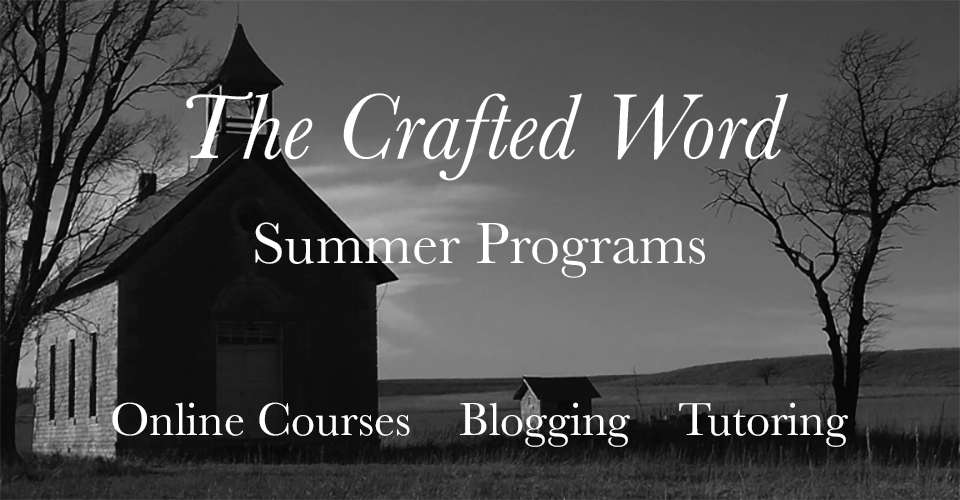
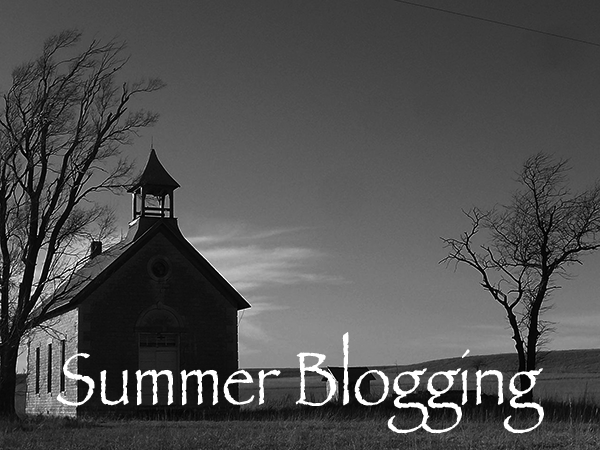
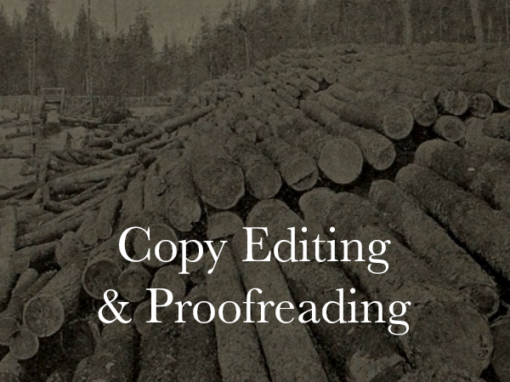
Message or Call 978-793-1553
Fitz is remarkable as a writing teacher for a number of reasons: for his help with technique, for his impressive role-modeling, and for his inspiring personality. I wanted to write well when I wrote for Fitz!
~Paul Michaud
Winner: The Groton School Writing Prize, 2018
With the wit and engaging personality of a born storyteller, Fitz connects with his students and inspires them to write confidently and effectively in their own voices. He taught our son the fundamentals of excellent writing through critical analysis of poetry, song lyrics, classic literature, blogs and video essays. Thanks to Fitz’s guidance and support, our son is excelling at Vanderbilt University.
~Dave Reudiger
John has tutored all three of my boys. He engages his students with a creative, effective and dynamic toolset that includes technology, humor, compassion and a deep knowledge of students to enhance and deepen his or her writing skills and self-confidence.
~Gari Palmer
When the eyes rest on the soul--that's Fitzy

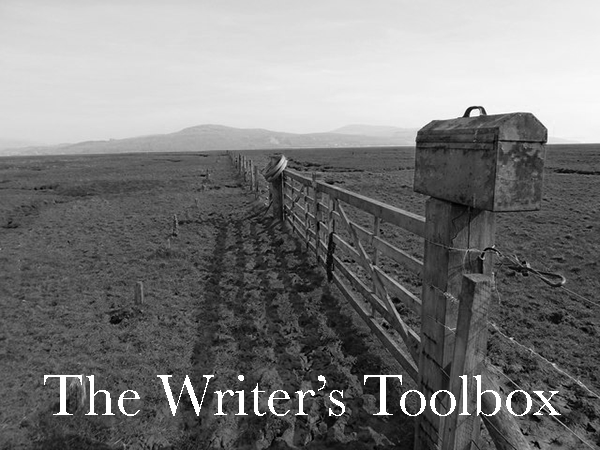
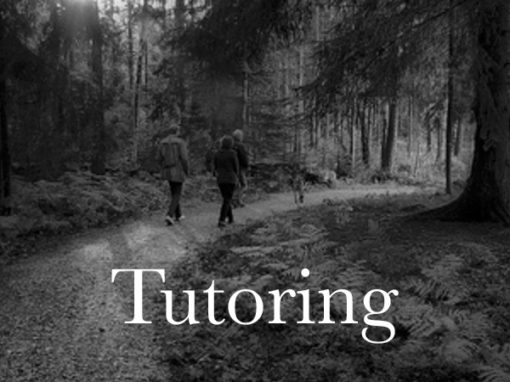
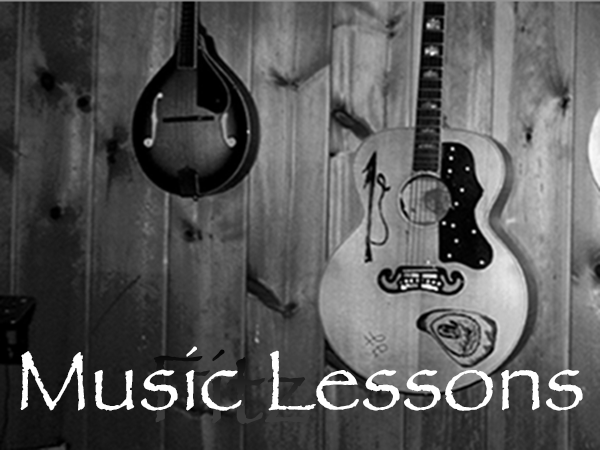
Recent Comments